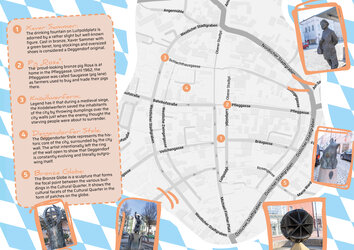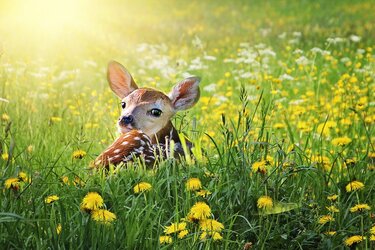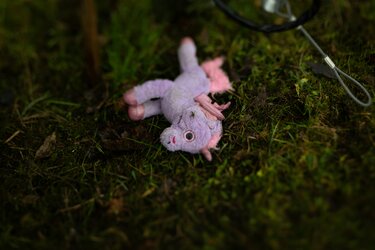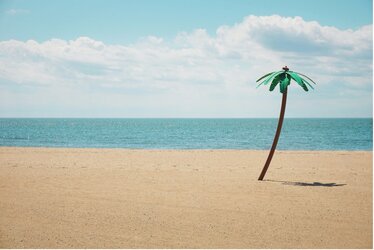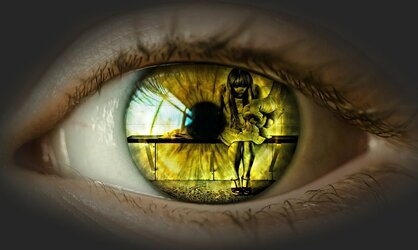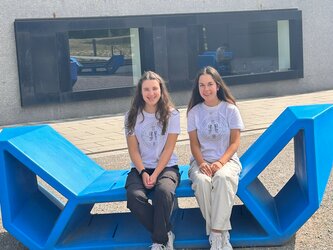
You´ve just arrived in Deggendorf and would like to explore the city? Or you´ve been living here for some time and would like to get to know your home from a different perspective? Whether you´re a newcomer, an international student or a long-time resident - our artistic journey through the city, explained along iconic pieces of public art, gives you a new perspective on the city. These sculptures will not only show you the unique and creative side of the city, but also reveal a lot about the history of Deggendorf.
Let’s start our tour at the heart of the historic district, right in front of the old city hall. The drinking fountain on Luitpoldplatz is adorned by a rather slight but well-known figure. Cast in bronze, Xaver Sammer with a green beret, long stockings and oversized shoes is considered a Deggendorf original. It is no coincidence, that the sculpture of „Xidi“ was placed at the marketplace, where you can buy fresh vegetables, fish and dairy twice a week. Xaver Sammer was famous for his expertise in mushrooms and herbs, which he shared till his death in 1982 with the customers of the farmer’s market. Can you spot the mushrooms in his basket?

Conclude your artistic stroll to the Pfleggasse, the home of “Rosa”, a proud-looking bronze pig. Until 1962, the Pfleggasse was called Saugasse (pig lane). Farmers used to buy and trade their pigs there. Because those smart and funny animals are often considered as a symbol of luck, “Rosa” is often stroked for this very reason. Over the years, the bronze acquired some shiny spots. Need any luck for upcoming assignments? Go give it a try, it can’t do any harm.

Moving through the town, your next encounter awaits you at the “Westlicher Stadtgraben” This is where the fountain of the Knödelwerferin (a woman throwing a dumpling) is located. Have you ever heard of the Deggendorfer dumpling legend? According to the story, Deggendorf’s inhabitants were rescued during a medieval siege by a courageous woman. She threw some dumplings over the city wall, just when the enemies thought that the people plagued by hunger would give up. An act of self-confidence that impressed the besiegers so much that they retreated. While there is no historical evidence for that story, I guess that strong woman conveys an important message: stand up for yourself! Despite her raised arm, nowadays the Knödelwerferin symbolises no threat, but draws attention to the town’s history.

Not far from the Knödelwerferin is the Deggendorfer Stele. What do you see in this artwork? Maybe a ribcage or a leaf? A glance at your navigation app will show you the true motif of the stele. The branches in the centre represent the historic core of the city, surrounded by the city wall. If you walk through the alleys attentively, you can still discover the remains of the city wall. The artist intentionally left the ring of the wall open to show that Deggendorf is constantly evolving and literally outgrowing itself.

The next sculpture awaits us in the city's Cultural Quarter - a bronze globe on a stone cone. The fountain forms the focal point between the various buildings in the Cultural Quarter: the city library, the city museum, the crafts museum and the Kapuzinerstadl (a place for concerts, theatres, etc.). The globe represents our Earth, but instead of continents, it is divided into geometric patches. Instead of geographical borders, the fountain shows the cultural facets of the Cultural Quarter in the shape of those patches.

Deggendorf's public art beckons us to embark on a cultural journey that tells us a lot about the towns past and present. The statues collectively weave a narrative of intellectual curiosity, technological prowess, cultural exchange, historical roots, and playful exploration. They are also a showing Deggendorf through the eyes of the locals: self-confident, thoughtful, and with a good dose of humour. As you navigate through these artistic landmarks, let the colours, shapes, and stories tell their tales. Want to learn more about the town’s history? The Deggendorf tourist office offers various guided tours (in German) that are interesting for both locals and internationals. More information is available here: www.deggendorf.de / tourismus@deggendorf.de
Franziska Hierbeck studied journalism with a focus on history in Eichstätt and is currently completing a traineeship at the Passauer Neue Presse (local newspaper). Although she was born in Deggendorf, she was able to see the city from a new perspective through public art. Her conclusion: art is the link between the present and the past - if only we look closely.





